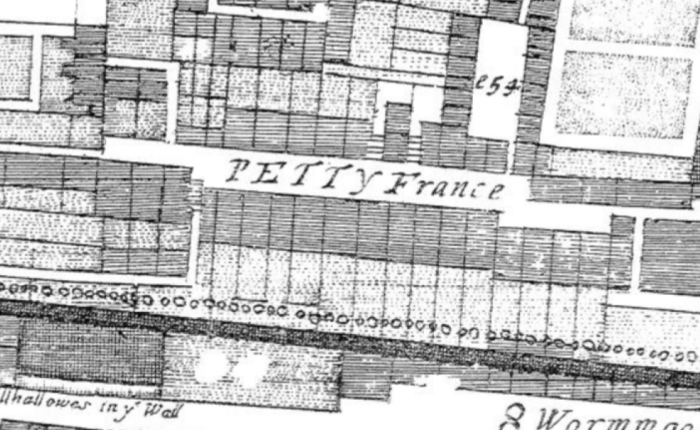This is a common question. Why does 2LCF 25 (Of Marriage) omit the paragraphs dealing with divorce in WCF 24 (Of Marriage, and Divorce)? I do not intend to offer a theological answer to this question, but a historical-textual one.
To answer this question, we really should direct it to a different party. The Baptists were not the first ones to remove these paragraphs. They were third. Consider four historical points.
First, remember that the Westminster Assembly was subject to Parliament. It had been called by Parliament to craft a project of religious reform for the national church. Accordingly, it submitted its draft of a Confession of Faith as Advice to Parliament in 1646.

The Assembly’s Advice contained the paragraphs on divorce and remarriage.

This version of the Confession of Faith was printed in Scotland and has been known as the Westminster Confession of Faith ever since.
Second, we must realize that Parliament did not approve this version of the Assembly’s Advice. What is commonly known as the “Westminster Confession of Faith” was not officially approved or adopted in England. Parliament required various changes, including the removal of the paragraphs from the chapter on Marriage, and Divorce. (Ironically, they did not change the title of the chapter, though they removed its references to divorce.) Here we see the 1648, Parliament-approved version of the Confession ending chapter 24 without paragraphs five and six.

Third, we must realize that in 1658 when the Congregationalists collaborated to craft the Savoy Declaration, they used the 1648 Parliament-approved version of the Assembly’s Confession, not the 1646 version proliferated in Scotland. They said this themselves:

That copy of the [Parliament-approved Confession of Faith] followed by us, is in few men’s hands; the other as it came from the Assembly, being approved of in Scotland, was printed and hastened into the world, before the Parliament had declared their resolutions about it; which was not till June 20 1648, and yet has been, and continues to be the copy (ordinarily) only sold, printed, and reprinted for these 11 years.
In the preface to the Savoy Declaration, the Savoy Divines mentioned various portions of the Westminster Confession which they had omitted, including portions of the chapter on marriage and divorce. The Savoy Divines noted that they agreed with the edits made by Parliament in these cases.

Also a great part of the 24th chapter of Marriage and Divorce [was omitted]. These [omitted portions] were such doubtful assertions, and so unsuitable to a Confession of Faith, as the Honorable Houses [of Parliament] in their great wisdom thought fit to lay them aside.
It was the Savoy Declaration that changed the title of the chapter to “Of Marriage”, omitting the addition, “, and Divorce.”
Fourth, when 2LCF was published in 1677, it self-consciously drew from the Savoy Declaration and the Westminster Confession (as is commonly known).

In conclusion, when we arrive at 2LCF 25.1-4 and do not find paragraphs 5 and 6 from WCF 24, we need to remember that the houses of Parliament and the Savoy Divines had already regarded them as unsuitable for a Confession of Faith. The Baptists were not the first, or even second, to omit them. Those paragraphs were never approved in an English Confession of Faith.
It is not my intention to enter into the rationale(s) behind the omission of these paragraphs. To discern each group’s reasons, one must interrogate their own writings and the sources that influenced them.

